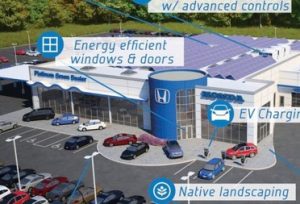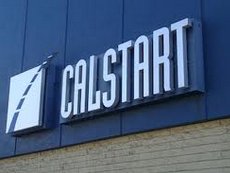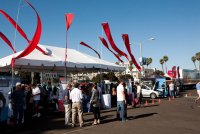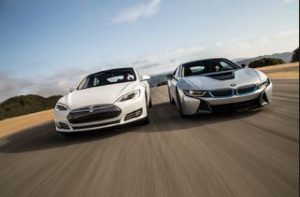Here’s my take on the 10 most significant and interesting occurrences during the past week…….
 Honda’s sustainability drive is being carried forward to its dealer network through its Green Dealer Guide resources. The 93-page guide offers instructions to Honda dealers on making their operations more energy efficient. Methods include installing high-efficiency lighting, using climate-control systems, managing water use, and using renewable energy sources like solar power. This strategy goes well with Honda’s corporate blueprint on environmentally sound practices – which has been impressive enough for the company to win several “greenest automaker” rankings from the Union of Concerned Scientists. The guide has been in the works over the past three years, and now offers its network dealers techniques on saving energy and money. One example is adding an automated thermostat and adjusting lights after business hours, which can save the dealer $7,000 per year and would cut energy consumption by at least 10%.
Honda’s sustainability drive is being carried forward to its dealer network through its Green Dealer Guide resources. The 93-page guide offers instructions to Honda dealers on making their operations more energy efficient. Methods include installing high-efficiency lighting, using climate-control systems, managing water use, and using renewable energy sources like solar power. This strategy goes well with Honda’s corporate blueprint on environmentally sound practices – which has been impressive enough for the company to win several “greenest automaker” rankings from the Union of Concerned Scientists. The guide has been in the works over the past three years, and now offers its network dealers techniques on saving energy and money. One example is adding an automated thermostat and adjusting lights after business hours, which can save the dealer $7,000 per year and would cut energy consumption by at least 10%.- Convenience, economy, increased awareness, and driving fun and reliable cars are the main reasons Renault-Nissan surpassed its 200,000th zero-emission vehicle (ZEV) in sales, according Carlos Ghosn, chairman and CEO of the Renaualt-Nissan Alliance. Ghosn is very good at championing the cause and made some impressive statements in his LinkedIn post…… The Nissan Leaf is by far the best selling its electric vehicle worldwide – so much so that sales up 20% this year. The Leaf, Renault Zoe and other zero emission vehicles in the automakers product lineup have been driven about four billion kilometers – enough to circle the earth 100,000 times!
- Two non-internal combustion engine vehicles made this year’s top rankings in Wards Auto’s “10 Best Engine” annual listing. The BMW i3 was the only one of four battery electric vehicles evaluated for the contest to make the cut. Judges liked the power options, including the i3 Rex gasoline range extender edition. The Hyundai Tucson Fuel Cell also made the top 10; the panelists liked how Hyundai has packaged the fuel-cell stack under the hood – helping to make the entire ownership experience similar to driving a regular internal combustion engine vehicle.
- Here’s a huge opportunity: only 4% of companies surveyed by GE Capital have alternative fuel vehicles in their fleet, but more than 55% plan on adding them in the coming years. That comes from a national survey of 409 executives at middle market companies who have responsibility for their company’s vehicle fleets.
- Tesla China President Veronica Wu has resigned from her position with Tesla Motors after less than nine months in the job. No details have come out yet on why this might have happened. “We remain confident in the Chinese market,” the company said in an e-mailed statement.
- Having trouble managing your analysis of company and fleet greenhouse gas emissions (GHG)? Here’s a guide for corporate environmental health and safety (EHS) officers on approaching methods for accurately calculating GHG emissions for reporting purposes. Regulatory uncertainty means that companies need to stay current on the latest and best methods.
- Two leaders from Alabama Clean Fuels Coalition have been named to the Clean Cities Hall of Fame. Executive Director Mark Bentley and President Phillip Wiedmeyer were inducted by National Clean Cities Co-Director Linda Bluestein while representatives from nearly 100 Clean Cities coalitions gathered for the annual coordinator workshop. In 2013, Bentley and Wiedmeyer lead the Alabama coalition as it saved more than three million gallons of petroleum and averted more than 12,000 tons of greenhouse gases through deploying alternative and renewable fuels.
- California Energy Commission (CEC) is receiving applications for funding medium- and heavy-duty advanced vehicle technology demonstration projects. Those applications will be received through Jan. 29, 2015. Demonstrations receiving funding must enhance market acceptance of advanced vehicle technologies that will lead to vehicle production and commercialization, reduce greenhouse gas emissions, and reduce petroleum use, according to the CEC.
- France is pushing for a huge change in its car ownership model – getting rid of diesel-powered cars. About 80% of French motorists drive diesel-powered cars, so the government is launching a car identification system to rate vehicles by the amount of pollution they emit. Taxation is the method that will be used to redirect consumers to more ecologically sound choices.
- Only a third of diesel-powered passenger cars have lower cost-of ownership than their non-diesel counterparts. That’s down from 46% of diesel vehicles being cost effective in the 2013 edition of Vincentric’s Diesel Analysis study. Of the 35 diesel vehicles included in the study, only 11 have lower ownership costs than their all-gasoline counterparts. Of these 11, 10 were luxury models – making it even tougher to save any money during diesel vehicle ownership.









